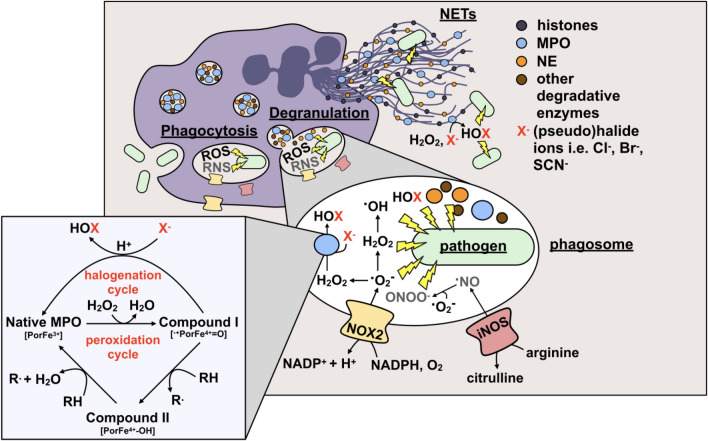Fig. 1.
Neutrophil strategies to kill invading pathogens. Neutrophils are equipped with multiple weapons against pathogens, such as bacteria (light green) including uptake into phagosomes (phagocytosis). Subsequently, pathogens are degraded in the phagosome by several means. These include reactive oxygen and nitrogen species (ROS/RNS) generated by NADPH oxidase (NOX2) and inducible nitric oxide synthase (iNOS) as well as the release of antimicrobial effectors [i.e. neutrophil elastase (NE; orange), myeloperoxidase (MPO; blue), lysozyme and other degradative enzymes (brown)] into the phagosome (degranulation), and the formation of neutrophil extracellular traps (NETs). The NETs themselves are associated with antimicrobial proteins including histones, and the aforementioned NE and MPO. Inside the phagolysosome MPO reacts with H2O2 to form Compound I, the most oxidatively reactive state of MPO. Compound I can then react with an electron-rich organic substrate (RH) to form radical species (R·) and Compound II. Compound II subsequently reacts with another substrate (RH) to return to the native state of the MPO, completing the peroxidation cycle. But much more importantly, in the halogenation cycle (pseudo-)halide ions (X−) such as chloride (Cl−), bromide (Br−) or thiocyanate (SCN−) are oxidized by Compound I to yield the respective hypohalous acids (HOX), HOCl, HOBr or HOSCN, directly regenerating native MPO

